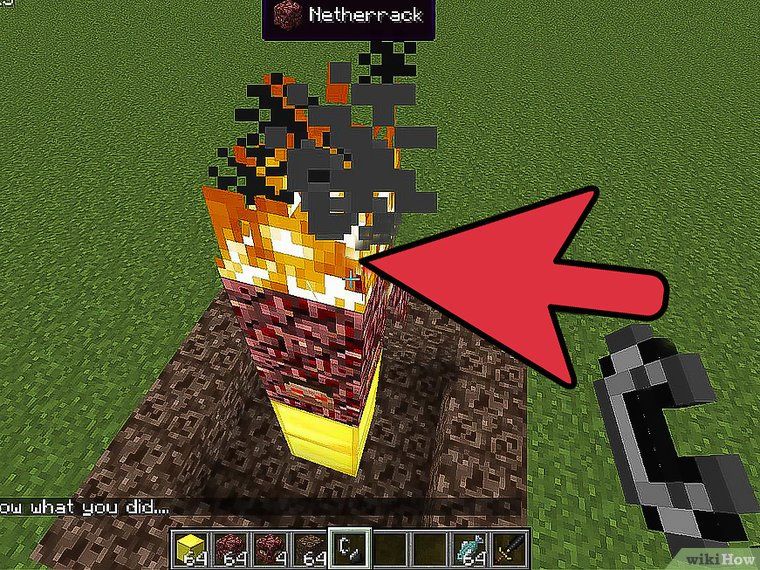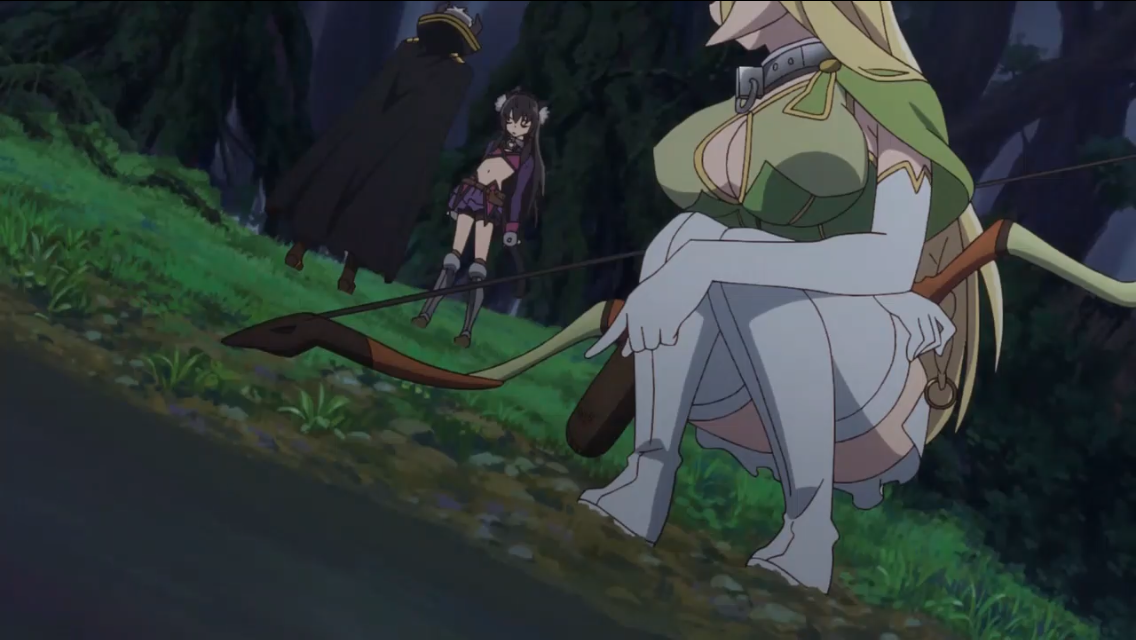WATCH LIVE
Welcome,
Your Account
Log Out
Saturday, August 17, 2019
EMBED <>
More Videos<iframe src="https://abc7chicago.com/video/embed/?pid=5474738" frameborder="0" allowfullscreen></iframe>
What was supposed to be a fun ride turned into a harrowing ordeal for an Idaho man who was pinned against a tree for three days following an ATV crash.
ATHOL, Idaho -- What was supposed to be a fun ride turned into a harrowing ordeal for an Idaho man who was pinned against a tree for three days following an ATV crash.
Howard Coates, 66, said he was out for a quick ride near his home when he became trapped just before nightfall Thursday with no way to free himself and no way to summon help.
"I'm not sure exactly how it happened, but it ended up on top of me and had my back shoved up against the tree," Coates recalled. "The tree actually gave me a tattoo in the back."
Coates recalled seeing police helicopters overhead while he was trapped: "They were flying all around me, but they just didn't see me."
His hip broken, Coates resourcefully used what he had to survive the dayslong ordeal, using the top of his toolbox to catch rainwater to drink.
No matter how dire the situation may have seemed, Coates said he never lost faith about how his situation would end.
"From the time that I crashed to the time that I was found, I just knew my son and my brother would find me," he said. "And sure as hell...they found me."
Coates was discovered Sunday. He was rushed to the hospital, where he let a new perspective about his ordeal sink in.
"I don't much believe in miracles, but my wife says it is, and I'm going to have to go with her story," he said.
Coates is now in a rehabilitation facility. Other than a broken hip, he said he feels great and can't wait to get back to four-wheeling on the same trail.
Report a correction or typo
Copyright © 2023 WLS-TV. All Rights Reserved.
Related Topics
2 hours ago
1 hour ago
2 hours ago
Concerns raised after garage break-in video goes viral in Indonesia
Chicago Park District launches new Lifeguard Training Academy
Police: Child's remains found in rural central Indiana
3 hours ago
When a person breaks the law, they may be given a summons to appear in court or a ticket. Most laws are violation-level offenses, which may carry a penalty of up to $1,000. A few statutes are criminal misdemeanors, which are punishable by higher fines and/or one year in jail. Misdemeanors include refusing to stop for a
Most laws are violation-level offenses, which may carry a penalty of up to $1,000. A few statutes are criminal misdemeanors, which are punishable by higher fines and/or one year in jail. Misdemeanors include refusing to stop for a
police officer, unauthorized use (stealing), removing or defacing signs, and a second offense for operating on railroad tracks, cemeteries or airports or for offenses for operating while under the influence of drugs and/or alcohol. Some offenses carry a requirement to attend a Responsible Rider Safety course.
Any offense that occurs within a public right-of-way can be considered a motor vehicle offense and motor vehicle laws may apply. These may impact a person’s driver’s license privileges.
If an OHRV or snowmobile is involved in an offense, the registered owner may be held liable, and the registration may be revoked. Effective 7/1/2019 some fines have been increased through legislation.
Minors: When a person under 16 years old breaks the law, the officer can have the vehicle towed and impounded for up to 24 hours. A summons may also be issued. If an adult has knowledge that a child under the age of 16 was operating the vehicle illegally, the adult may be liable for the actions of the child.
A summons may also be issued. If an adult has knowledge that a child under the age of 16 was operating the vehicle illegally, the adult may be liable for the actions of the child.
Loud snowmobiles and OHRVs are a primary cause of complaints from landowners and other trail users. All operators are encouraged to ride quiet vehicles. It is illegal to modify an exhaust system in any way that increases the noise level from that of the original muffler.
Snowmobile noise levels must comply with the manufacturer specifications as contained in the requirements of the Snowmobile Safety and Certification Committee approval. Snowmobiles manufactured after 2/1/2007 must display “SSCC Certified” on exhaust system. Trail bikes and ATVs cannot emit noise that exceeds 96 decibels.
OHRVs designed for “closed course competition” may only be used at approved OHRV competitions, unless the OHRV is modified to meet all equipment requirements including muffler, spark arrestor and noise emissions.
Snowmobile and OHRV operators must submit to a sound level test when requested to do so by a law enforcement officer.
All motorized OHRVs (including trail bikes) operating in woodlands and that emit exhaust within 4 feet of the ground, must be equipped with a spark arrestor.
Every year in New Hampshire, many people are injured in OHRV or snowmobile accidents and collisions; some die. More than half (58%) of all accidents involve speed and/or inexperience.
Accidents often can be avoided by practicing safe and responsible operation. Other common contributing factors include impairment (alcohol/drugs), inattention, riding on thin ice, operating in unfamiliar areas, and failing to wear protective equipment.
In the 2018-2019 season, rentals accounted for nearly 40% of all snowmobile accidents. For information on what you need to know before renting a snowmobile go to: wildnh.com/ohrv

All provisions of the New Hampshire Financial Responsibility law shall apply to an OHRV or snowmobile operated on a public highway. Any person who fails to report an accident involving death or personal injury shall be guilty of a Class B felony.
OHRV or snowmobile insurance is not required to operate in New Hampshire, however liability insurance protection is recommended.
Signs and Trail Markers
Signs and trail markers are established for public safety. A great deal of time and money is spent to erect these signs to improve your riding experience. Please pay attention to them. It is illegal to remove, destroy, deface or obstruct signs and markers on trails or on private property. Violation of this law is a misdemeanor.
A great deal of time and money is spent to erect these signs to improve your riding experience. Please pay attention to them. It is illegal to remove, destroy, deface or obstruct signs and markers on trails or on private property. Violation of this law is a misdemeanor.
Modified Exhaust Warning
No person shall modify the manufacturer’s specified exhaust system of an OHRV or snowmobile in any manner that will increase the noise emitted above that of the original muffler.
RSA 215-C:30, 215-A:12
Share the Trail
Consider other trail users, both motorized and non-motorized, including cross-country skiers, sled dogs, snowshoers, pedestrians, horses, etc., while you are on the trails. The Bureau of Trails and N.H. Fish and Game work with state associations and member clubs to ensure that your experience is one that you will enjoy and remember for a long time.
You won’t scare ATV owners with a water barrier – after all, we have an all-terrain vehicle under us, and not an urban “passenger car”.
But it also happens that the ATV cannot cope with deep mud or ford, and gets stuck. This situation is not rare, so everyone who gets behind the wheel of such equipment should know how to act.
Fortunately, all ATVs have a reliable and simple device, including drowning. Therefore, even if your all-terrain vehicle is completely submerged, this does not mean that it has died. If you act quickly and correctly, very soon you will be able to drive again.
Consider two situations:
In the first case, the most important thing is not to try to start: you can only complicate the problem.
In the second case, our actions depend on how deep the ATV has sunk. If the snorkels or the inlet are hidden under water, turn off the engine. If they remain above the surface, you can try to get ashore. To do this, you can either turn back along your trajectory, or choose another route if it is shorter. Just be sure to check the depth and hardness of the bottom so as not to drown the ATV completely.
To do this, you can either turn back along your trajectory, or choose another route if it is shorter. Just be sure to check the depth and hardness of the bottom so as not to drown the ATV completely.
If you didn’t manage to leave, and the engine eventually stalled (by itself or you turned it off) - the following options remain:
If none of the methods helped, you will have to look for a more powerful technique that will pull out the “drowned man”. If you have to leave the place of events for this, do not forget to mark it. The easiest way is to tie something bright on the nearest tree.
Important: ideally, the ATV should be evacuated to a place where there are conditions for normal inspection, drying and replacement of consumables. All steps listed below should be taken only if it is not possible to call a tow truck.
All steps listed below should be taken only if it is not possible to call a tow truck.
 Or if it's really hot, you can leave them to dry without fire.
Or if it's really hot, you can leave them to dry without fire. 
When you get (whether on your own, in tow or by tow truck) to the garage, the ATV will have to be serviced more thoroughly.
If you haven't done something from the list above, do it.
If you have carried out the whole range of rescue operations while still on the shore, upon returning to the garage (or service station):
 The maximum program is to disconnect all connectors and treat them with silicone grease.
The maximum program is to disconnect all connectors and treat them with silicone grease. Important: These steps are worth doing even if you started the ATV after drowning and rode it back normally. It may be that the water has remained somewhere - in the future this can lead to bad consequences.
A huge selection of modern children's motorcycles causes great envy among adults, because in their childhood there were no such toys, and the only means of transportation for active youth in those years was the most ordinary Soviet bicycle. Interesting modern and safe children's ATVs Armada are excellent simulators for children, they will allow you to release excess energy and develop a quick reaction. And what joy such a gift can cause in a child!
Interesting modern and safe children's ATVs Armada are excellent simulators for children, they will allow you to release excess energy and develop a quick reaction. And what joy such a gift can cause in a child!
The main indicator for the Armada children's ATV is complete safety. The father, giving such a “toy”, must correctly and clearly instruct the child how to drive an ATV, and the rest of the safety is guaranteed by the reliable car itself. Children's ATVs, such as the ArmadA ATV 50B, have speed limiters that parents can control. For example, if you are afraid that a child may accelerate strongly and crash into a fence, then you can limit the speed of the ATV as you wish. Also, high-quality disc brakes, a powerful steel frame work to protect the child from injuries.
Standard Armada ATVs are designed for teenagers and school-age children. However, an adult can also ride on them, since the design can withstand up to 70 kg of live weight. Children's ATVs are designed for the age of pilots from 7 to 15 years. The maximum speed of such ATVs is not at all significant - only 40 km / h. At the same time, they are equipped with a very simple and understandable control system, which even a preschooler will understand.
The maximum speed of such ATVs is not at all significant - only 40 km / h. At the same time, they are equipped with a very simple and understandable control system, which even a preschooler will understand.
Of all the variety of sports, multi-purpose and universal children's ATVs, Armada motor vehicles are known to all lovers of high-quality sports vehicles.
This Chinese manufacturer does more than just ATVs. Its range also includes scooters, snowmobiles and various accessories for motorcycles. Regardless of the country of origin, Armada motorcycles deserve the highest praise. It is characterized by endurance and durability. In addition, we cannot but rejoice at the pleasant ratio of excellent design, reasonable price and decent technical characteristics. In addition, each ATV can be equipped with a remote system for stopping and starting the engine. Thus, you will be able to guide the actions of the child on your ATV without getting up.
All children's Armada ATVs are divided into classes that differ in safety features, engine, size, and control. To choose the right ATV model for your child, you need to understand each of these parameters, especially since the price also depends on the technical characteristics.
To choose the right ATV model for your child, you need to understand each of these parameters, especially since the price also depends on the technical characteristics.
The first factor is the size of the ATV. The child should freely touch all the controls, while not hunching over and not feel uncomfortable. This is a prerequisite. Taking an ATV "for growth" is strictly not recommended, since the use of such motor vehicles can become unsafe for a child. Armada ATVs are divided by age into models for children aged 3 to 5 years, from 6 to 12, and from 12 to 16 years.
The smallest kids will love the 49cc ATV 50B ATV or the ArmadA ATV 50I. A teenager will feel more confident behind a larger and more powerful ATV, where the engine size will be 110 cubic meters.
Children's ATVs are two-stroke and four-stroke. The first type is more compact, easily fits even in the trunk of a car. Four-strokes are more powerful, larger and heavier, so they are not recommended for small children.